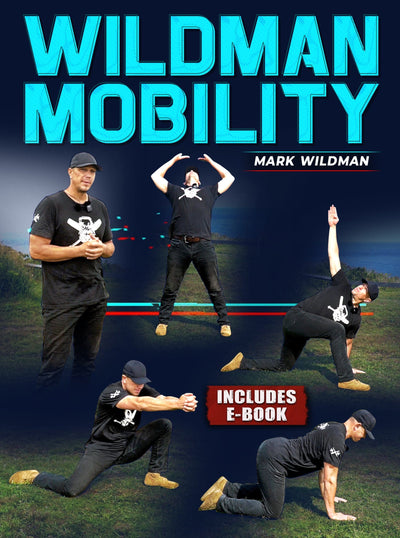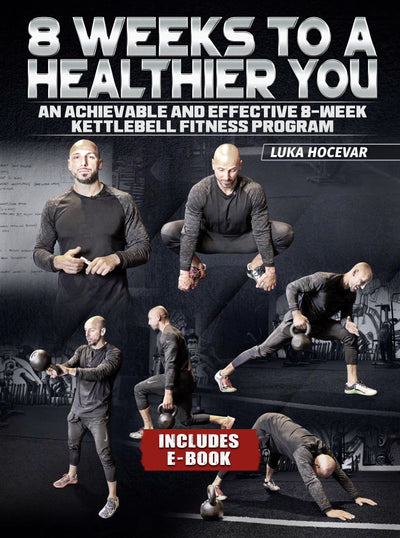Finding the Perfect Kettlebell Weight
Kettlebells have surged in popularity in recent years, and for good reason. These versatile, cast-iron weights offer a dynamic way to enhance your fitness regimen, providing an efficient and effective full-body workout. But, if you're new to the world of kettlebells, one of the most common questions is, "What's a good kettlebell weight for me?" In this guide, we'll explore the factors that influence your choice of kettlebell weight, the types of exercises you can perform, and the many benefits of incorporating kettlebells into your routine.
What this article covers:
- Understanding Kettlebell Basics
- Factors to Consider When Choosing a Kettlebell Weight
- Types of Kettlebell Exercises
Understanding Kettlebell Basics
Before we dive into selecting the right kettlebell weight, let's understand the basics. Kettlebells are a type of free weight that originated in Russia in the 18th century. Unlike traditional dumbbells, they have a unique design with a handle attached to a heavy, rounded base, allowing for a wide range of functional movements and exercises. Kettlebells come in various weights, making them suitable for people of all fitness levels.
If you are looking for how to use kettlebells, finding a bodyweight and kettlebell workouts, crossfit rx kettlebell weight, or how to increase kettlebell weight, we have you covered!
Factors to Consider When Choosing a Kettlebell Weight
The appropriate kettlebell weight for you depends on several factors:
Your Fitness Level: If you're a beginner, start with a lighter kettlebell to learn proper form and avoid injury. Experienced lifters can opt for heavier weights to challenge their strength.
Your Goals: Determine whether you want to focus on endurance, strength, or a balance of both. Your goals will influence your choice of kettlebell weight and the types of exercises you perform.
Age and Health: Consider any physical limitations or injuries. If you have health concerns, it's essential to consult with a healthcare professional before starting kettlebell training.
Gender: Generally, men might choose heavier kettlebells than women due to differences in muscle mass and strength.
Exercise Selection: Certain exercises require different kettlebell weights. Some movements, like swings, can be done with heavier kettlebells, while others, like Turkish get-ups, are better suited for lighter weights.
Types of Kettlebell Exercises
Kettlebell Swings
Kettlebell swings are a dynamic full-body exercise that engages multiple muscle groups at once. They primarily target the glutes, hamstrings, and lower back, making them an effective choice for building strength and power. Beyond muscle engagement, swings provide an excellent cardiovascular workout, elevating your heart rate and aiding in fat burning. The powerful hip thrusting motion required for swings also helps enhance explosive power in your hips, which can be advantageous for various sports and activities. Moreover, this exercise encourages proper posture and alignment due to the hip hinge movement. To execute kettlebell swings, stand with your feet shoulder-width apart, bend at the hips, and grasp the kettlebell handle with both hands. From there, swing the kettlebell back between your legs and thrust your hips forward to bring it up to chest height. Repeat the motion by swinging the kettlebell back and thrusting your hips forward.
Turkish Get-Ups
Turkish get-ups are a versatile exercise that offers a full-body strength workout. This exercise engages the muscles in your shoulders, core, and legs, making it an excellent choice for those looking to build overall strength. One of the standout benefits of Turkish get-ups is the enhanced stability and balance they promote. As you transition from lying down to standing while holding the kettlebell overhead, you develop stability and balance, which is valuable for preventing injuries and improving functional fitness. Additionally, this exercise is highly practical, mimicking real-world movements and enhancing joint mobility and flexibility. To execute a Turkish get-up, start by lying on your back with the kettlebell in one hand, arm extended. Gradually work your way up to a standing position while maintaining control and stability, then reverse the steps to return to the starting position.
Kettlebell Goblet Squats
Kettlebell goblet squats focus on building leg and core strength while also helping to refine your squatting technique and posture. This exercise is highly versatile and can be adapted to suit various fitness levels, making it accessible to beginners and challenging for more advanced lifters. Goblet squats target the quadriceps, hamstrings, and glutes, helping to develop strength in these key leg muscles. Proper squatting form is crucial, and goblet squats can assist in achieving this as they encourage you to keep your chest up and the kettlebell close to your body. To perform goblet squats, hold a kettlebell close to your chest with both hands, stand with your feet shoulder-width apart, and squat down by bending your knees and pushing your hips back. Lower yourself until your thighs are parallel to the ground, and then push through your heels to return to the starting position.
Kettlebell Presses
Kettlebell presses are upper-body strength exercises that primarily target the shoulders, triceps, and upper chest. These exercises are ideal for building strength in the upper body and can be crucial for enhancing shoulder stability, which can help prevent injuries. Kettlebell presses mimic practical movements, such as pushing heavy objects, making them useful for daily activities. To execute a kettlebell press, stand or sit with a kettlebell in one hand, palm facing inward, and the weight resting on your shoulder. Press the kettlebell overhead by extending your arm, then lower it back to the shoulder. Maintaining proper form and control throughout the movement is essential for effectiveness and safety.
Kettlebell Rows
Kettlebell rows are exercises that concentrate on strengthening the muscles in your upper back. These exercises not only improve posture but also reduce the risk of back pain by targeting the upper back muscles. Kettlebell rows are an effective way to enhance grip strength, which can be beneficial for various weightlifting activities. Rows are versatile and can be performed with one or both arms, making them suitable for a wide range of fitness levels. To perform kettlebell rows, stand with your feet hip-width apart, hold a kettlebell in one hand, and bend at the hips and knees. Pull the kettlebell towards your hip by bending your elbow, then lower it back down with control, maintaining proper posture throughout the exercise.
These kettlebell exercises offer a diverse and effective means of achieving your fitness goals, and mastering them can lead to significant improvements in strength, stability, and overall physical fitness. It's important to start with the appropriate kettlebell weight and focus on proper form to ensure a safe and productive workout. Over time, as you become more skilled and stronger, you can gradually progress to heavier kettlebells for continued growth and challenge.
Benefits of Kettlebell Training
Incorporating kettlebells into your fitness routine can lead to numerous benefits:
Efficient Full-Body Workout: Kettlebell exercises engage multiple muscle groups simultaneously, making them incredibly time-efficient.
Improved Cardiovascular Health: Dynamic movements, such as swings, elevate your heart rate, enhancing cardiovascular endurance.
Enhanced Core Strength: Many kettlebell exercises require a stable core, leading to improved balance and posture.
Functional Strength: Kettlebell training helps build real-world strength and enhances your ability to perform everyday activities with ease.
Burns Calories: Kettlebell workouts are known for their fat-burning potential, making them a valuable addition to weight loss programs.
The question of what kettlebell weight is right for you depends on your individual circumstances, but with the right guidance and consideration, you can find the perfect fit. As you become more experienced and stronger, you can gradually progress to heavier kettlebells. Just remember that proper technique and form are crucial for safety and effectiveness.
So, whether you're looking to build strength, improve endurance, or achieve a well-rounded fitness regimen, kettlebell training has something to offer. It's time to embark on your kettlebell journey, selecting the perfect weight and reaping the countless benefits these versatile tools can provide.
Did you find the blog helpful? If so, consider checking out other guides:
- 12 Week Kettlebell Workout Program
- Full Body Kettlebell Workout Program
- Kettlebell and Barbell Program
- 6-Week Kettlebell Workout Program
- Kettlebells Workout for Beginners
- Kettlebell Weight for Beginners
- Kettlebell Workouts for Female Beginners
- Advanced Kettlebell Workout
- A 3-Day-a-Week Kettlebell Workout
- 10,000 Kettlebell Swing Challenge
- How Many Kettlebell Swings
- 300 Kettlebell Swings a Day
- 50 Kettlebell Swings a Day
- Calories Burned Kettlebell Swings
- Double Kettlebell Swing





